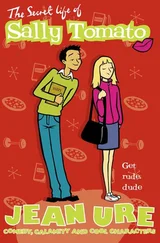Therefore, it was the two women’s decision to give Norma Jeane to yet another foster family—the Atkinsons—but just temporarily. George and Maud Atkinson, both English, were in the periphery of show business as bit players in films. George had also worked as a stand-in for George Arliss, the distinguished British actor and the first Brit to win an Academy Award as Best Actor. He and Maud had a young daughter named Nellie who was around Norma’s age. It was decided that Norma Jeane could be happy with them while Gladys and Grace strategized their next move.
Roosevelt had promised that he would not stand by and watch the Depression deepen. He wanted to restore the public’s confidence in the government, and to that end he established a number of programs between 1933 and 1938 in his so-called New Deal for the country, a way to give relief and reform to Americans during such incredibly difficult times. Indeed, in order to make it possible for Americans with small incomes to purchase homes with low-cost mortgages, he established the Home Owners’ Loan Corporation. In July 1933, Grace did her research and figured out a way for Gladys to take advantage of Roosevelt’s plan. She took care of all of the paperwork and navigated her way through all of the red tape in order to help make a real estate purchase. However, at the last minute, Grace had second thoughts about the timing of such a financial commitment after hearing the studio they worked for was going on strike and knowing that would mean trouble for them.
In August, Gladys purchased a two-story home with three bedrooms on Arbol Drive near the Hollywood Bowl. Gladys made the down payment of $5,000 by obtaining a loan from the Mortgage Guarantee Company of California. Interestingly, on the application she falsely stated that she was “Gladys Baker, a married woman.”
Once in the home, Gladys was unsure about raising Norma Jeane there. She simply could not get past the notion—or the excuse—that Norma Jeane would be unhappy, no matter how much Grace tried to convince her that this was not the case. In the end, Gladys was just nervous having Norma Jeane and assuming responsibility for her. It’s understandable. After all, she knew in her heart that she was unstable and was never sure how she would react to everyday situations. From time to time, she still heard those voices in her head, scaring her, taunting her, warning her of some imminent—and in truth, nonexistent—reality.
It was Grace’s idea to have the Atkinsons move in with Gladys and Norma Jeane so that Gladys wouldn’t feel the weight of too much responsibility. As it happened, the Atkinsons were having a difficult time financially and decided it would be a good idea. Though this was a strange turn of events, it did make Gladys more comfortable.
Whereas the Bolenders were religious and, where Ida was concerned, quite strict, the Atkinsons were more easygoing in nature. “They liked to drink a little, smoke, dance and sing and play cards, all the things that I had been taught were sinful,” Marilyn Monroe would recall many years later. “And they still seemed like very nice people to me.”
One day, George Atkinson showed Norma Jeane a magazine with the actress Joan Bennett on the cover and said that she looked like a younger version of Bennett. Norma Jeane didn’t think she resembled Bennett at all, she later said, “but it was an interesting moment for me. It made me think…” Indeed, it was during the months that she knew the Atkinsons that Norma Jeane began to appreciate films and start to wonder what it might be like to be on the screen herself.
The early 1930s were an interesting time in show business history. The strains of FDR’s rousing campaign song, “Happy Days Are Here Again,” were still ringing in the ears of Americans in 1933, but Hollywood’s output did not reflect the same euphoria and upbeat mood. At least not yet. Dominating the film capital’s output in 1932 had been crime dramas from Warner Bros. ( Scarface , I Am a Fugitive from a Chain Gang , both starring Paul Muni); horror pictures ( Freaks , Murders in the Rue Morgue , White Zombie , The Old Dark House , The Mummy ); the star-heavy Grand Hotel and the back-to-nature jungle movie Tarzan the Ape Man , both from MGM; and Marlene Dietrich’s vampy eastern, Shanghai Express. Quigley’s Almanac’s first annual Top Ten list of movie stars for 1932–33 was headed by sixty-four-year-old character actress Marie Dressler. She would be dead within two years from cancer, but her place would shortly be taken by the world’s soon-to-be most popular child star of all time, Shirley Temple. The following year, 1933, was a different picture, with a mix of Top Ten film fare that included three musicals from Warner Bros.— 42nd Street , Footlight Parade , and Gold Diggers of 1933. Grace knew just about all there was to know about all of these films—who was in them, who directed them, who produced them. She delighted in bringing Norma Jeane to see these kinds of films with the Atkinsons and encouraged the little girl that, one day, it might be her up on that screen.
Though Gladys didn’t know what to make of her daughter’s sudden interest in being an entertainer, she did sometimes take Norma Jeane to Grauman’s Chinese Theatre to see the latest film. Like many generations of movie buffs to come, Norma Jeane Mortensen would put her hands and feet into the cement imprints of famous stars of the day, thrilled at the opportunity to be so “close” to the actors and actresses she’d grown to love by their work in her favorite movies. It’s worth noting, though, that during this time Norma Jeane would also feel the influence of the Bolenders in her life. She would remember feeling somewhat guilty about enjoying the more carefree lifestyles of Gladys, the Atkinsons, and even Grace. Therefore, she would get down on her knees at night and pray for all of them—as Ida Bolender might have insisted—in the hope that they be forgiven their sins.
The Voices Return
F or just a few months—August until October—life was relatively tranquil for young Norma Jeane Mortenson. She was adjusting well to living with Gladys and the Atkinsons. In September 1933, Norma Jeane enrolled in the second grade at the Selma Avenue elementary school, and she seemed to be settling in with her fellow classmates and teachers. As far as she was concerned, it felt like Gladys was really trying to make it work with her, which no doubt gave her a sense of security. Would it have been too much to ask for it to last more than two months?
Unfortunately, in October, everything was ruined by a letter Gladys received from her former brother-in-law, Audrey. She hadn’t heard from him in years. Now he was writing to give her the horrible news that her thirteen-year-old son, Jackie, had died back in August of tuberculosis of the kidneys. Gladys always hoped that her children were happy in the care of their father and his wife. She didn’t know that Jasper had done a questionable job of raising Jackie. For instance, he’d taken him out of the rehabilitation center against the advice of doctors. Then, there was an incident with a firecracker, which cost the boy an eye. Shortly after, his kidneys began to fail him. “Daddy should have taken him to the hospital,” Gladys’s daughter Berniece once recalled. “Finally, Jackie’s kidneys failed completely.”
Remember that Jackie and Berniece had been born into a relatively stable home. In their first few years, Gladys had every intention of raising them herself. After they were taken from her by Jasper, Gladys reconciled the loss and began to wait for the unfolding of a different period in her life, one where she would be emotionally equipped to be a mother to her two children. She believed that day would come when the children were adults.
Читать дальше












